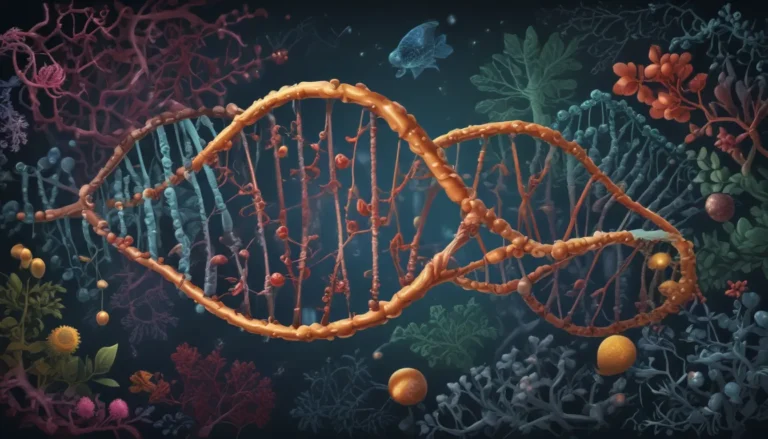A Note About Images: The images used in our articles are for illustration purposes only and may not exactly match the content. They are meant to engage readers, but the text should be relied upon for accurate information.
X-rays have transformed the landscape of medicine, art, and science, providing a window into the human body and the world around us. From their serendipitous discovery to their wide-ranging applications in various industries, X-rays continue to captivate individuals across disciplines. In this article, we will uncover 18 intriguing facts about X-rays, shedding light on their historical significance, diverse uses, and the incredible individuals who have shaped our understanding of this remarkable form of radiation. Join us on a journey through the captivating world of X-rays, as we unravel hidden marvels and surprising applications that make them an indispensable tool in modern society.
Unveiling the Influence of X-Rays
- X-rays have revolutionized medicine, art, and science, offering insight into intricate details within the human body and beyond. Their impact spans across various fields, inspiring innovation and advancing our understanding of the visible and invisible realms. From detecting fractures to exploring ancient artifacts, X-rays have become integral to our lives, enhancing medical diagnostics, ensuring security, and contributing to scientific breakthroughs.
The Timeless Legacy of X-Ray Technology
Since their discovery by Wilhelm Conrad Roentgen in 1895, X-rays have been an essential tool in the medical field, enabling healthcare professionals to visualize internal structures and facilitate diagnoses. This groundbreaking technology has revolutionized medical practices, empowering providers to make informed decisions that save lives and improve patient outcomes.
Unveiling the Science behind X-Rays
X-rays are a form of electromagnetic radiation with wavelengths shorter than ultraviolet light. This high-energy radiation can penetrate various materials, including the human body, allowing for the visualization of bones, organs, and tissues. Their ability to pass through soft tissues while being absorbed by denser structures has made X-rays invaluable in medical imaging, providing critical insights into the body’s internal anatomy.
Illuminating Role of X-Rays in Medical Diagnostics
One of the most well-known applications of X-rays is the detection of fractures and bone abnormalities. By capturing images of the skeletal system, X-rays assist healthcare professionals in identifying fractures, dislocations, and bone deformities, guiding appropriate treatment interventions in orthopedic medicine.
X-Rays in Dental Care: A Clear Picture of Oral Health
In dentistry, X-rays play a vital role in diagnosing oral health issues that may not be visible during a routine examination. By providing detailed images of teeth, jawbone, and surrounding tissues, X-rays aid dentists in identifying cavities, periodontal disease, impacted teeth, and other dental concerns, enabling comprehensive treatment planning.
Beyond Healthcare: X-Rays in Security and Industry
X-rays are not limited to healthcare; they are also utilized in security and industrial settings for inspections and quality control purposes. X-ray scanners enhance airport security by screening luggage and cargo for potential threats. Moreover, industrial applications of X-ray technology include examining welds, inspecting metal components, and ensuring the integrity of manufactured products.
X-Rays in Cancer Treatment: A Ray of Hope
X-ray technology has been instrumental in the field of oncology, particularly in cancer treatment. Radiation therapy, which involves the targeted use of X-rays to destroy cancer cells, has been pivotal in shrinking tumors and mitigating cancer progression, offering patients a fighting chance against this formidable disease.
Unveiling Mysteries with X-Rays in Archaeology
Archeology and historical preservation have benefited from X-ray analysis, allowing researchers to explore the internal structure of ancient artifacts. X-ray imaging provides insights into the craftsmanship and composition of historical objects, contributing to the preservation and understanding of diverse cultural artifacts.
X-Rays in Veterinary Medicine: Healing Paws and Hooves
In veterinary medicine, X-ray imaging aids veterinarians in diagnosing and managing medical conditions in animals, from companion pets to livestock. It assists in evaluating skeletal injuries, identifying foreign objects, and diagnosing health issues in animals, showcasing the versatility and impact of X-rays across different domains of healthcare.
Evolution of X-Ray Technology: Advancing Imaging Modalities
The evolution of X-ray technology has led to the development of advanced imaging modalities, such as computed tomography (CT) scans and fluoroscopy. These techniques offer enhanced capabilities for visualizing internal structures, capturing dynamic processes, and obtaining detailed cross-sectional images, broadening the diagnostic capabilities in healthcare.
Fusion of Science and Art: Inspiring Creative Expressions
The captivating nature of X-ray images has inspired artistic and creative expressions that explore themes of transparency, introspection, and the juxtaposition of seen and unseen elements. Artists and designers draw inspiration from X-ray visuals, showcasing the profound influence of X-ray technology beyond its medical and scientific applications.
Public Fascination and Cultural References: X-Rays in Pop Culture
The impact of X-rays has permeated popular culture, reflected in various artistic representations and cultural references. From depictions in literature and cinema to inclusion in fashion and visual arts, the allure of X-rays has captivated people worldwide. This enduring fascination underscores the legacy of X-ray technology as a symbol of discovery and innovation.
The Realm of Non-Invasive Medical Diagnostics
X-ray imaging has revolutionized medical diagnostics by offering a non-invasive means to explore internal structures without surgery. This technology enables healthcare providers to diagnose a wide range of medical conditions accurately, facilitating timely interventions and personalized treatment approaches for respiratory ailments, gastrointestinal disorders, and more.
Advancements in Material Science and Engineering: A Pixelated Perspective
In material science and engineering, X-ray technology plays a pivotal role in analyzing the properties and structures of various materials. Techniques like X-ray diffraction provide valuable insights into material composition, crystalline structure, and behavior, driving innovations in material design, manufacturing, and industrial applications.
Enabling Scientific Discoveries in Diverse Fields
X-ray applications have led to groundbreaking scientific discoveries across fields such as physics, chemistry, biology, and environmental science. X-ray crystallography, in particular, has elucidated molecular structures and biological macromolecules, contributing to our understanding of fundamental processes and pharmaceutical development.
Safeguarding Air Travel: X-Rays in Airport Security
X-ray scanners are crucial in airport security measures, enabling the screening of luggage for prohibited items and security threats. By detecting concealed objects, X-ray technology enhances aviation safety, ensuring the integrity of air travel and passenger well-being.
Exploring the Cosmos with X-Rays: A Stellar Perspective
X-ray telescopes in astronomy have expanded our understanding of the universe by capturing high-energy X-rays emitted from celestial bodies and cosmic phenomena. These telescopes offer insights into phenomena like black holes, supernovae, and pulsars, enhancing our comprehension of energetic processes in outer space.
X-Rays in Forensic Science: Decoding Clues and Unraveling Mysteries
Forensic science has benefited from X-ray technology in analyzing evidence related to criminal investigations. X-ray imaging aids forensic experts in examining specimens, identifying hidden details, and reconstructing crime scenes, providing valuable evidence that contributes to justice and criminal case resolution.
Pioneering Innovative Medical Interventions: A Minimally Invasive Approach
X-ray technology has paved the way for innovative medical interventions, including minimally invasive procedures and image-guided treatments. Procedures like angiography and minimally invasive surgeries rely on X-ray imaging to visualize internal structures in real-time, allowing precise interventions with improved patient outcomes.
Conclusion: A Bright Future with X-Rays
X-rays have revolutionized medicine, security, and materials science, offering invaluable insights into the human body and diverse aspects of society. Their impact transcends disciplines, shaping advancements in healthcare, technology, and scientific research. As we continue to harness the power of X-rays, new innovations and discoveries are on the horizon, promising to shape the future in ways beyond our imagination.
Frequently Asked Questions
-
What are X-rays, and how do they work? X-rays are a form of electromagnetic radiation that can penetrate solid objects. When directed at an object, some X-rays pass through while others are absorbed, creating an image based on varying levels of absorption.
-
Are X-rays harmful? While high levels of X-ray exposure can be harmful, controlled use in medical and industrial settings is generally safe. Protective measures, such as lead aprons and shielding, minimize the risk of exposure for patients and workers.
Whether exploring the depths of human anatomy or uncovering mysteries in archaeological artifacts, X-rays continue to fascinate and inspire curiosity. Their versatile applications and impactful contributions across domains underscore their significance as a transformative innovation that shapes our understanding of the visible and invisible realms. Trust in the credibility and authenticity of X-ray technology as you delve into its multifaceted world of discovery and innovation.






